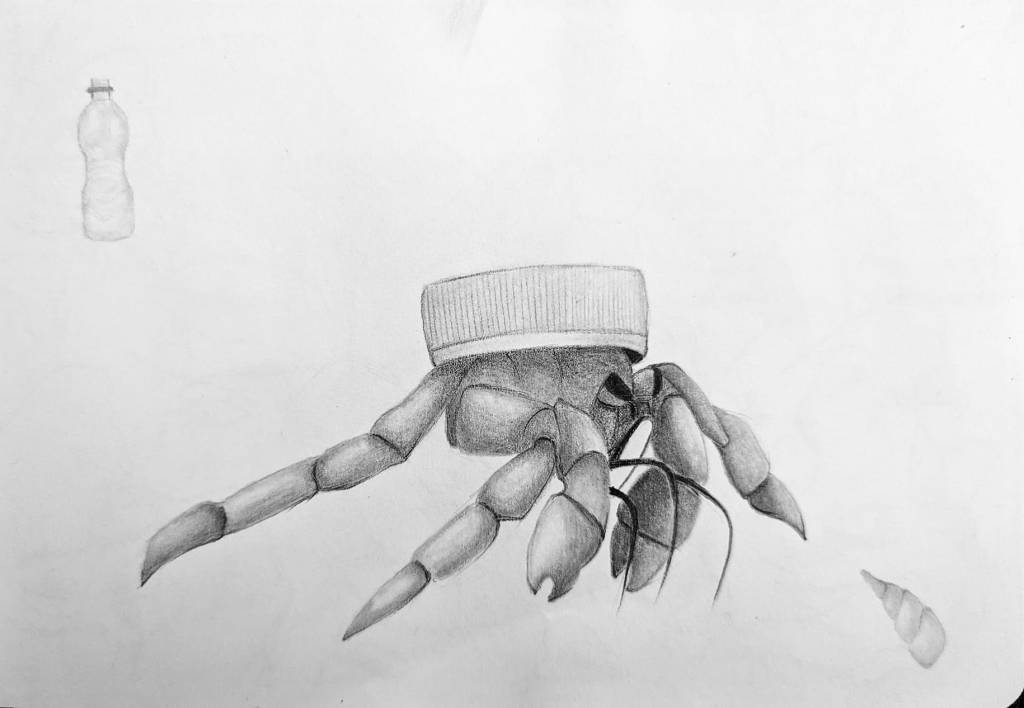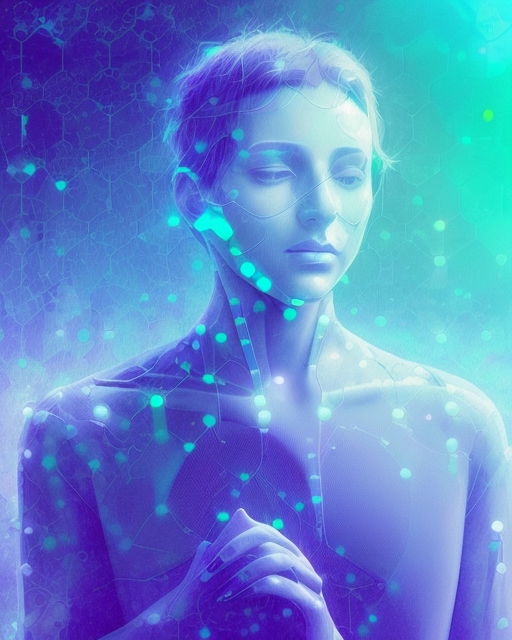Does Ferrando succeed in guiding readers towards greater posthuman awareness?
Newly released, The Art of Being Posthuman emerges as a visionary beacon with an enlightening message: embrace the entirety of existence by knowing who we are today, “right here, right now.” Inspired by Eastern philosophies, Dr. Francesca Ferrando breaks boundaries—of philosophy and spirituality, human and other-than-humans, and traditions of academic writing.
Readers navigate a non-linear labyrinth-like narrative, choosing “Meditations” after each chapter, with Ferrando’s voice reassuring, “At the end of the journey, you will have a complete picture, no matter what.” Readers can also opt for a linear narrative, treating the book as a guided meditation.
Contrary to Ferrando’s previous book, Philosophical Posthumanism, which outlines the urgency and importance of posthuman theory, The Art of Being Posthuman is ontologically driven and spiritually charged,1 calling for an active realisation of being posthuman, “know who you are, choose how to live” (2).

Ferrando’s call for existential awareness intentionally repeats throughout the “open-ended self-help guide” (190), as a literary tactic, drilling the message into the reader. This awareness isn’t bound to religious faith but to feelings of hope, realising the interconnectedness of existence.
“This book approaches posthumanism as a philosophy of life and, more clearly, a practice of existence to manifest deep, comprehensive, and personalised paths of self-exploration, as individuals and societies, species, and beyond. The message is crystal clear: we can be posthuman now in the ways we exist. There is a real need for posthumanist existential enlightenment, envisioning ourselves in the era of the Anthropocene, global pandemics, and the rise of artificial intelligence” (1).
Thus, this ontological challenge also means to “know where we are.” Emphasising situatedness, from feminist theory on the importance of knowing the place from which you speak with awareness, Ferrando underscores the need to rethink ways of existing “literally down to earth” if humans want to survive as a species (52). From early human ancestors to earlier bacterial evolution and to space, readers can expect a myriad of interesting subjects.
“Our posthuman mantra for the 21st century: We Are (P)Art, and Art. Beyond the Human: We Are” (193).
Why academia, why philosophy?
Ferrando admirably brings a fresh language and vision to academic posthuman philosophy. Her urgency to realise our agency, identity, and overcome limiting social constructs is rooted in a philosophical cause. However, the question arises: why has she chosen academic publishing and why philosophy to call for change?
As a posthuman philosopher, Ferrando uncovers the “ontological mystifications, social distortions, scientific reductionisms,” and limited constructs, critiquing anthropocentric ways of life, highlighting the urgent need to halt destructive behaviours intentionally and unintentionally worsening the ecological landscape.

The message is clear: Embrace reality by becoming aware of being posthuman—in relation to everything—and take responsibility.
However, as a reader, I question: if being posthuman means realising interconnectedness and understanding how actions are part of the matrix, letting go of limited beliefs of human superiority and dualisms between humans and nature, how can this be brought to practise?
Academic philosophy can only go as far as theoretical debates. Yet, Ferrando wishes for greater real-life change beyond the boundaries of academia and intellectualism.
Ferrando warns of “philosophical greenwashing,” where topics are debated without “implementing any real changes in our lives” (75).
“It is not enough to understand intellectually the interconnection of our planetary self” (83). To be posthuman means to create different ways of being, and this “cannot stay at the intellectual level,” she argues (92).
Nonetheless, does her book overcome this philosophical greenwashing? On one hand, she does succeed in challenging academic style and theory through her writing method; on the other, she still writes within academia. Is this the only way for modern philosophers to call for action?
Perhaps her style of meditations, may be her means to break the traditions and limits of theoretical philosophy. Ultimately we must come out of meditation and take action, and philosophers need to come down from their ivory tower after voicing their message to enact what they speak.
Traditional scholars will be challenged by Ferrando’s style and message, left intrigued by her attempt to bring change from within academia. Since she touches upon the real issue of academic greenwashing, scholars and students may be inspired to change their approach to research.
Furthermore, the accessible language of the book, along with a Q&A format, makes the book appealing to general readers, who may have many questions about posthumanism. Concepts and words are explained with their etymologies uncovered for a deeper understanding.
However, is academia the audience Ferrando actually appeals to? Or is it the spiritual seekers wanting to uncondition and practice being, and attain awareness of what is? Read the book and find out.
Eastern wisdom: On embodiment
Ferrando’s call for “ontological poiesis”2 shares similarities with Eastern ideas of awakening.

The book uses “interbeing,” a term coined by Zen Buddhist master Thich Nhat Hanh, as inspiration for bringing posthuman awareness, realising how we are always “intra-acting” and “inter-are.” Ferrando argues that realising these intra aspects in our daily lives leads to knowing how objects, places, and beings are “p(art)” of who “we/they are” (19).
“Ultimate self-realization lies in recognizing the individual self as the all-encompassing Self – that is: being (p)art of everything and everyone, the complete manifestation and its potentials, including its dimensional extinctions and possible (re)generations” (32).
Ferrando gives her spin by radically embracing all aspects of existence, stating gurus (teachers) are everywhere, including cyberspaces. Moreover, she combines ideas, such as Hindu lila (लीला) “the cosmic play,” to understand reality and Ubuntu’s “I Am Because You Are,” among other Buddhist, Sufi, and Rastafarian understandings of the self and others.
Ultimately, she argues that theory does not necessarily bring change. She goes as far as to say that, “in practice, we do not need to be posthumanists to recognize the urgent need for change” (92).
“Climate change is not a single problem but a metabolic crisis. Human habits have everything to do with it: the future is already here in the ways we are living the present. We must change our current ways of species self-maintenance, currently based on anthropocentric habits, capitalistic appropriations, and existential obfuscations” (80).
Inspiration from Eastern philosophies enables Ferrando to transgress Western academic theory and call for awakening, as Eastern philosophies are often incomplete if only understood in theory. They require practice and absorption—to live and embody the philosophy.
However, is the realisation of our posthuman ontology and agency enough? Are Ferrando’s signposts enough to spark an intentional end to the Anthropocene? Read the book to experience it yourself.
To me, The Art of Being Posthuman is a sigh of relief. It brings hope to Western academic writing and theory by emphasising the importance of practice, not getting caught in a spiral of debates while the Earth and life within it continue to be destroyed. I felt the urgency for change through Ferrando’s words and welcomed to explore ways of being posthuman.
Written by Venya Patel
Edited By Pepijn van der Zijden
- “The difference between religion and spirituality: the former consists of comforting beliefs and the latter consists of the willingness to strip away beliefs to see what’s really true” (Christopher Wallis, Near Enemies of The Truth, 2023, 81). ↩︎
- “Poiesis indicates the authentic flow of existential creativity where a framework of reference may be present but the outcomes cannot be fully predicted; an ontological tendency which includes and greatly exceeds the human,” The Art of Being Posthuman, 16. It relates to self expression and self creation. ↩︎
Leave a comment